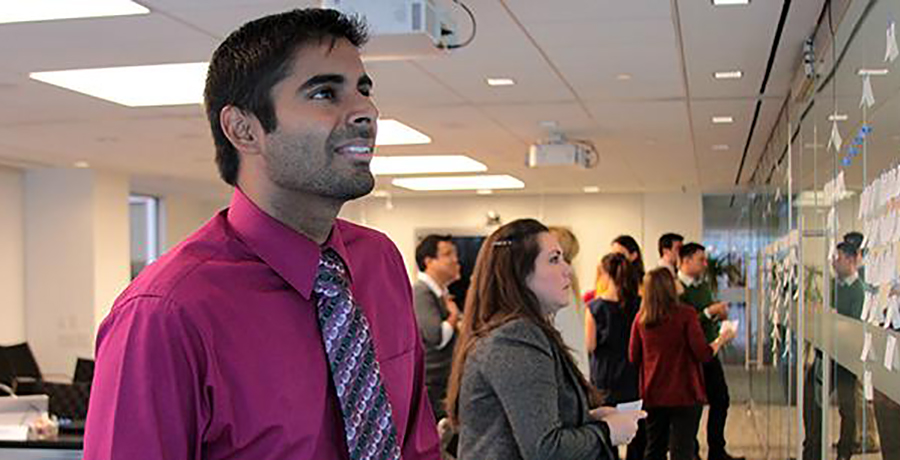We asked 2014 Intern Think Tank (ITT) member Avik Guha, AIA, to share how he found a great mentor, made time to study for the ARE, and what he’d change about the licensure process.
Why did you want to become an architect?
When I was young, I got into K’nex building sets. With the simple use of generic rods and connectors you could make so many amazing things—from towers to roller coasters. While this captured my imagination, it wasn’t until high school that I started seriously thinking about architecture as a profession. In 2004 my sister found out about a three-week summer camp at the University of Florida called the Design Exploration Program, where students would create projects and give presentations much like a design studio. The leader of the program, Martin Gundersen, was an absolute inspiration to learn from, and I consider him my most important mentor and the reason I pursued architecture. I ended up becoming a teaching assistant for that program a few years later. I carried that passion throughout my education and obtained my Design and Psychology bachelor’s degrees at the University of Florida along with my Architecture and Construction Management master’s degrees at Washington University in Saint Louis.
How did you balance working full-time and studying for the ARE?
When the weather would get frigid or sizzling in Saint Louis, I would study while cooped up inside and take the exams more often. Based on my familiarity with the material, I typically set aside several nights a week to really get into it for one to two months prior to each exam. In the spring and fall I’d head outside to Forest Park and find a nice tree to study under—it’s amazing how much being in a relaxing location helped me absorb new information. Since most people are taking different exams at various times, the hardest thing was to make myself study alone after a full day at work. Admittedly I took two years because I didn’t want to compromise much on attending social events or my personal travel plans.
What, if anything, would you change about the licensure process?
I think NCARB’s recent and upcoming changes address many of the issues. The upcoming ARE 5.0 alignment with project phases is more ideal than the current system, as is the streamlining of the IDP. This combined with the app, online tools, and reporting system have made it much easier to complete the process compared to the old paper system my coworkers have told me about. The only thing I would want to change now would be the cost of things, but I know that’s a pipe dream!
Do you have any tips for finding a supportive mentor?
Getting involved in local AIA/YAF chapters or the local design community is the best way. It can get more difficult to find a mentor after entering the profession from academia, but if you put yourself out there as much as possible you will find supportive mentors and peers. I think it becomes easy to relax and stay in after a day at work, but getting involved is a great outlet that builds connections, friendships, and can be an absolute blast!
Mentors were a huge part of our discussion at the 2014 ITT. If you've had a great mentor, pay it forward. If you haven’t had a great mentor, be a great mentor for someone else: everyone and the profession at-large will benefit.
Tell us about your experience with the Intern Think Tank.
The Intern Think Tank was a fantastic experience! It was amazing having representation throughout the entire country, from as far west as Hawaii to as far east as Boston. Although I know the opinions and issues regarding the licensure process with friends (especially those in Saint Louis), I was surprised by some of the issues that mattered to those in other regions. The “great intern debate,” which has thankfully come to a close after so long, was one issue that I cared little for because it didn’t affect me on the job: my stance has always been “if you don’t like it then get licensed!” While I still think that to some extent, I didn’t realize how the “intern” title can get lost in translation and how some may have less credibility with that moniker.
The experience opened my eyes to issues facing young architects in different regions, allowed me to make awesome new friends, and see how much NCARB actually cares about these issues. I highly recommend those who want to be part of the process to apply!
